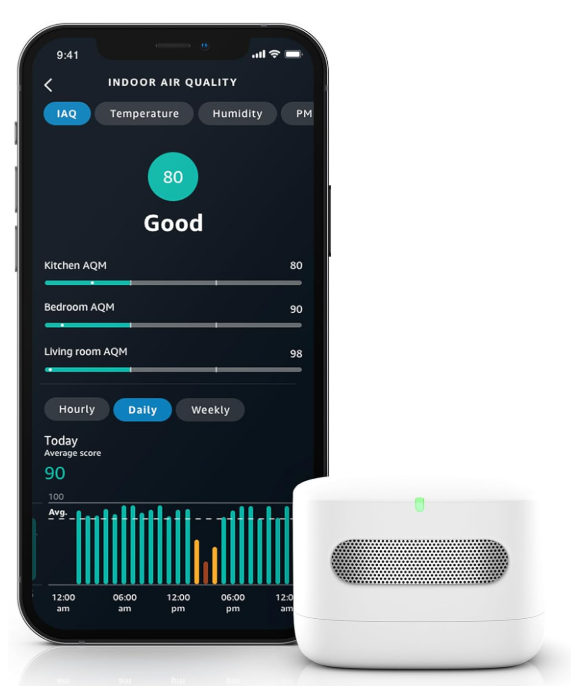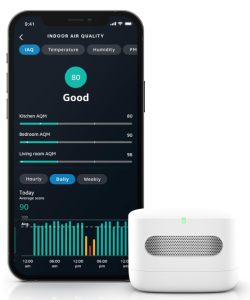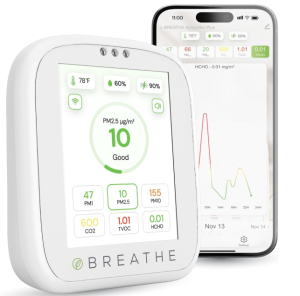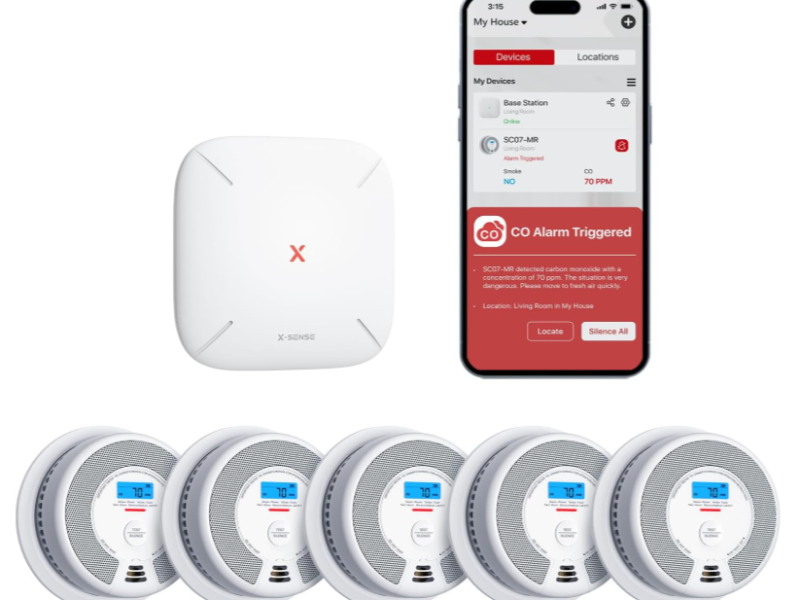Home Automation Creations recommends the Amazon Smart Air Quality Monitor due to the fact that it measures five different air quality variables (VOCs, particulate count, humidity, temperature and carbon monoxide) and can be controlled on your phone or with Alexa. (Note: As an Amazon Associate I earn from qualifying purchases.)
As far as simplicity and reliability goes, Amazon has made an indoor air quality monitor which is both comprehensive and easy to use. If you want to integrate it with Alexa, it can be done with a few clicks in your Amazon account, or you can just monitor it from your phone. It typically sells on Amazon for around $70 and you can see the latest updates.
For something a little more comprehensive, the BREATHE Airmonitor Plus measures eight different variables (PM1, PM2.5, PM10, formaldehyde, carbon dioxide, humidity, temperature and VOCs). As with the above air quality monitor, it both shows you air quality data and sends alerts straight to your phone.
If you’re looking for something with a base display and and don’t mind spending a little extra, the BREATHE Airmonitor plus could be a good option for your home. It typically retails for around $130 on Amazon, where you can see a complete list of features.
More on air quality monitors
An air quality monitor is a powerful tool for anyone looking to create a healthier home or workspace. These smart devices measure pollutants, allergens, humidity, and other air quality indicators, providing real-time insights that can help you breathe easier and live better.
One of the biggest benefits of an air quality monitor is health protection. Poor indoor air can contain invisible pollutants like dust, mold spores, volatile organic compounds (VOCs), and carbon dioxide. Long-term exposure can worsen asthma, allergies, or respiratory issues. An air quality monitor alerts you when these levels rise, so you can take action—like opening windows, using an air purifier, or adjusting your HVAC system.
Awareness and prevention are key. Without a monitor, it’s hard to know when your indoor air quality declines. These devices offer detailed data and trends, helping you identify problem areas and habits that may be contributing to poor air—such as using harsh cleaning products or burning candles in unventilated spaces.
Smart integration is another perk. Many air quality monitors connect to apps or integrate with smart home systems, allowing them to trigger actions automatically—like turning on an air purifier or adjusting a smart thermostat when CO₂ or particulate levels rise.
Productivity and comfort can also improve. Clean air contributes to better concentration, sleep, and overall wellness. In work environments, better air quality is linked to improved focus and reduced sick days.
Air quality monitors can help make your home more energy-efficient. By monitoring humidity and ventilation needs, you can fine-tune your heating and cooling systems to run more effectively. An air quality monitor is a small investment with big rewards. It offers vital information that empowers you to create a cleaner, safer, and more comfortable indoor environment for you and your family.



